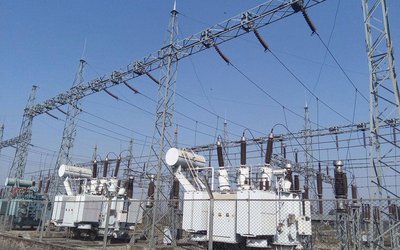Parties adopted a legally-binding instrument (Paris Agreement) on 12 December 2015 in the spirit of the Durban decision which had called for adoption of a 'Protocol, another legal instrument or an agreed outcome with legal force under the Convention, applicable to all Parties' in 2015. In my previous article (Spotlight, 27 November 2015), I wrote: 'Paris climate change conference must deliver a 'Protocol' to develop a path to limit the global average temperature rise to below 1.50C, as compared to pre-industrial level, based on science and demand of climate vulnerable countries, in particular the Least Developed Countries (LDCs)'.
The 21st session of the Conference of the Parties (COP 21) to the UN Framework Convention on Climate Change, 11th session of the COP, serving as the meeting of the Parties to the Kyoto Protocol, 43rd sessions of the Subsidiary Body for Implementation (SBI) & SB for Scientific and Technological Advice (SBSTA) and 12th meeting of the second part of the Ad Hoc Working Group on Durban Platform for Enhanced Action (ADP 2-12) took place in Paris, France from 30 November to 11 December 2015. The Leaders Summit and high-level segment were the major events for political guidance that took place on 30 November and 7-8 December 2015. Prior to this Conference, preparatory meetings of the LDCs and G77 and China were held in the last week of November 2015 in Paris to enhance understanding on issues, and develop common position to negotiate with developed country Parties.
The Leaders Summit showed a strong political will to agree on legally-binding instrument in Paris to address climate change impacts and provided guidance to negotiate on outstanding issues. Ministers led 'indaba' and bilateral negotiations were instrumental in finalising the Paris Agreement. The Group of 77 and China, a diverse negotiating group (with a number of small groups such as LDCs, Small Island Developing States, Like-Minded Developing Countries, BASIC etc), used the principles of 'Do No Harm to Each Other' and 'Leave No One Left Behind' to negotiate with the developed country Parties and worked well along with the words of Nelson Mandela that “it always seems impossible until it’s done”. Voices of all Parties and stakeholders were counted. The constructive and positive engagement of this Group and developed country Parties to the Convention helped to secure a successful outcome in Paris.
The tireless efforts, dedicated team and strong leadership of the French Presidency inspired all Parties to work constructively and in the spirit of compromise. The efforts were fruitful in giving a pleasant end to the COP 21 with the Paris Agreement – an Agreement accepted by all governments and adopted unanimously on 12 December 2015. The presence of the President of France and UN Secretary-General, including Minister for Foreign Affairs or Environment/ Climate Change of several Parties calls for urgent action to save planet and ourselves – life and its support system.
The 2015 will be memorable for the adoption of the Paris Agreement and 2030 Agenda for Sustainable Development (SDGs). It has ensured multilateralism and has brought the international community together to protect lives, properties, ecosystems and livelihoods of vulnerable people from the adverse impacts of climate change. This is a beginning and Parties and stakeholders should continue meaningful collaboration to implement the Paris Agreement effectively. This is the need of the hour. The year 2016 would provide Parties an opportunity to strengthen cooperation and collaboration as noted in Paris Conference.
Article 2 of the Paris Agreement mentions the urgency of enhancing the implementation of the Convention and strengthening of the global response to the threat of climate change, sustainable development, and to eradicate poverty. It recognises the need to significantly reduce the risks and impact of climate change and ensures to hold the increase in the global average temperature to well below 2 0C above pre-industrial levels and to pursue efforts to limit the temperature increase to 1.5 0C above pre-industrial levels. It also aims to increase ability to adapt and foster climate resilience by making financial flows. The Agreement will be implemented to reflect equity and common but differentiated responsibilities and respective capabilities.
The Agreement has a dedicated Article (7) on adaptation which has established the global goal on adaptation of enhancing adaptive capacity, strengthening resilience and reducing vulnerability. The Agreement recognises adaptation as a global challenge, requiring long-term global response to protect people, livelihoods and ecosystems, and provisions for ample opportunities to implement adaptation actions through extended support. These actions should follow country-driven, gender-responsive, participatory and transparent approach. It calls, inter alia, for sharing information, good practices and lesson learned, strengthening institutional arrangements, and assisting in identifying effective adaptation practices, needs, priorities and support, challenges and gaps.
The Agreement also has provisions for engaging Parties in adaptation planning processes which may include, inter alia, a process to formulate and implement national adaptation plans (NAPs), and assessment of climate change impacts and vulnerability. It also provisions for submitting and updating adaptation communications, and undertaking the global stocktaking to recognise adaptation efforts, enhanced implementation, effectiveness of adaptation and support provided, and review of overall progress.
The COP 21 has made several decisions to promote the implementation of the Convention. Parties will process for ratification and develop necessary methods, tools and procedures for the effective implementation of the Paris Agreement beyond 2020. Translating commitments into implementation with provisions for finance, technologies and capacity building should also be a joint commitment of Parties to the Convention.
The COP 21 has, inter alia, noted the active engagement of the LDCs in the process to formulate and implement NAPs. As of now, Burkina Faso and Cameroon have shared their NAPs through the NAP Central. Donors have pledged USD 248 million for LDC Fund on 30 November 2015 in Paris to support for NAPA implementation in the LDCs. The mandate of the LDC Expert Group has been extended for 5 years to provide, inter alia, technical guidance and support, including on integration of climate change adaptation into national planning, and accessing funding from Green Climate Fund for NAP formulation and implementation.
Increased number of knowledge-based delegates has promoted for effective participation in the climate negotiation processes. The Paris Agreement opens multiple avenues to address climate change challenges, vulnerabilities and risks. The present challenge for countries like Nepal may be related to understand the provisions and implications of the elements of the Agreement at national level and process for ratification and effective implementation.
Nepal may wish, inter alia, to: (i) form a working group to understand the provisions and implications of the Paris Agreement and COP21/CMP11 decisions in the Nepalese context; (ii) participate at appropriate level in the high-level signatory ceremony on 22 April 2016; (iii) expedite process to secure climate finance; (iv) strengthen in-country capacity building initiatives; (v) find ways to include mountain agenda in UNFCCC processes; and (vi) organise side-events, as from 2009 to 2011, during UNFCCC negotiation meetings to share knowledge and experiences and inform development partners and international communities on our achievements, gaps and needs for additional support for climate change activities.

Batu Uprety
Former Joint-Secretary and Chief of Climate Change Management Division, Ministry of Environment (then), and former Team Leader, National Adaptation Plan (NAP) formulation process. E-mail: upretybk@gmail.com
- Institutional Response And Leadership on Climate Negotiations
- Mar 28, 2024
- The Wire Without A Current
- Mar 20, 2024
- Call For Degazetting the Shivapuri-Nagarjun National Park
- Feb 08, 2024
- Advancing Need-Based Adaptation Options
- Jan 14, 2024
- Decoding The Mountain Call Into Action At Home
- Dec 19, 2023
















